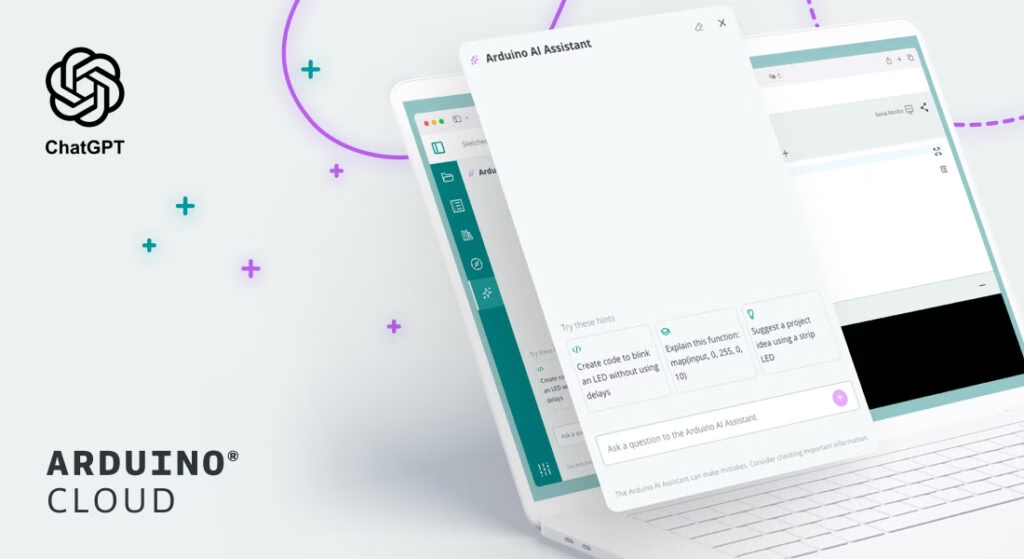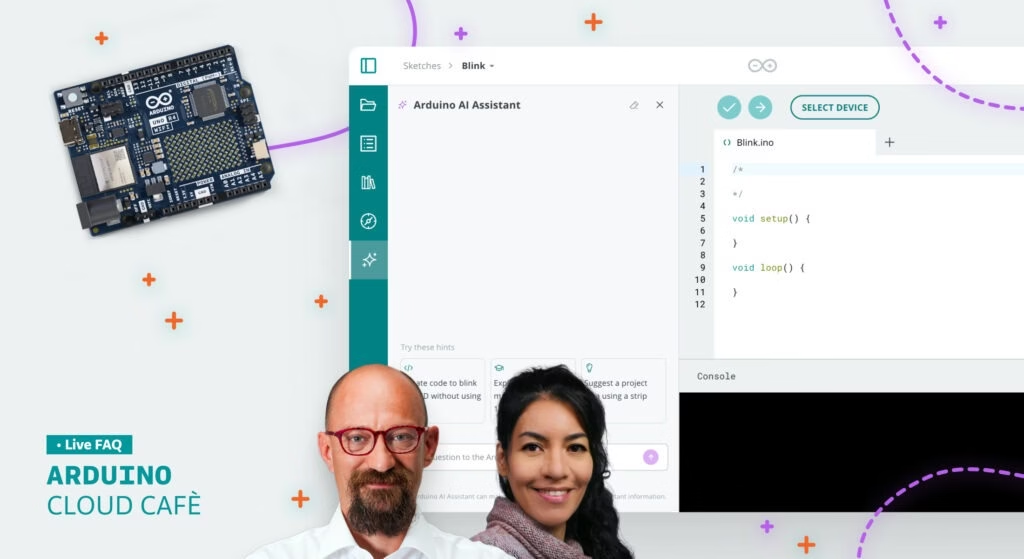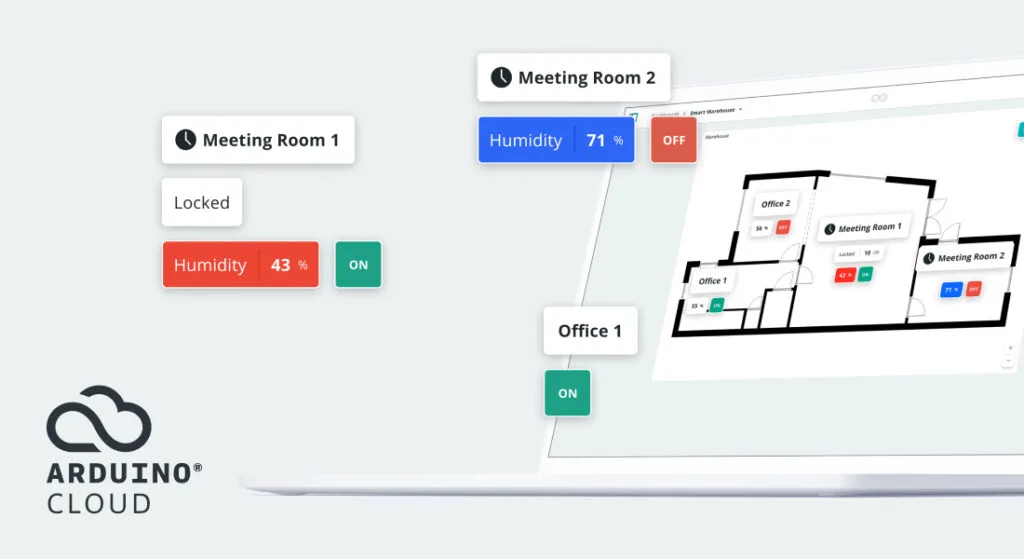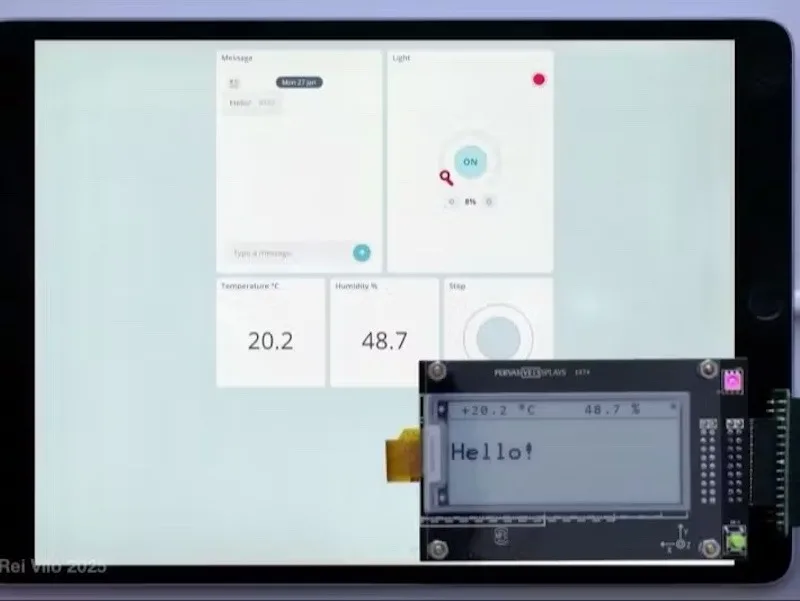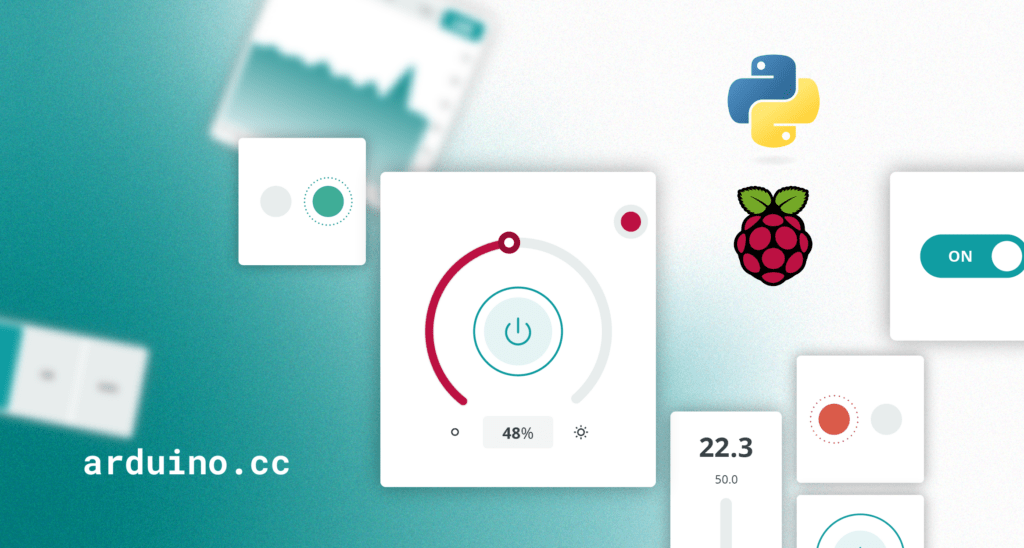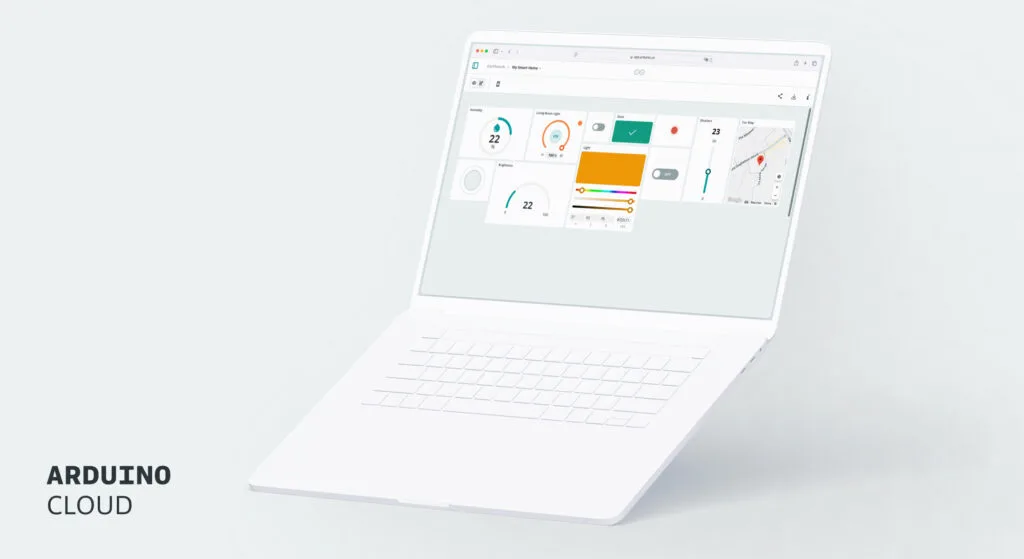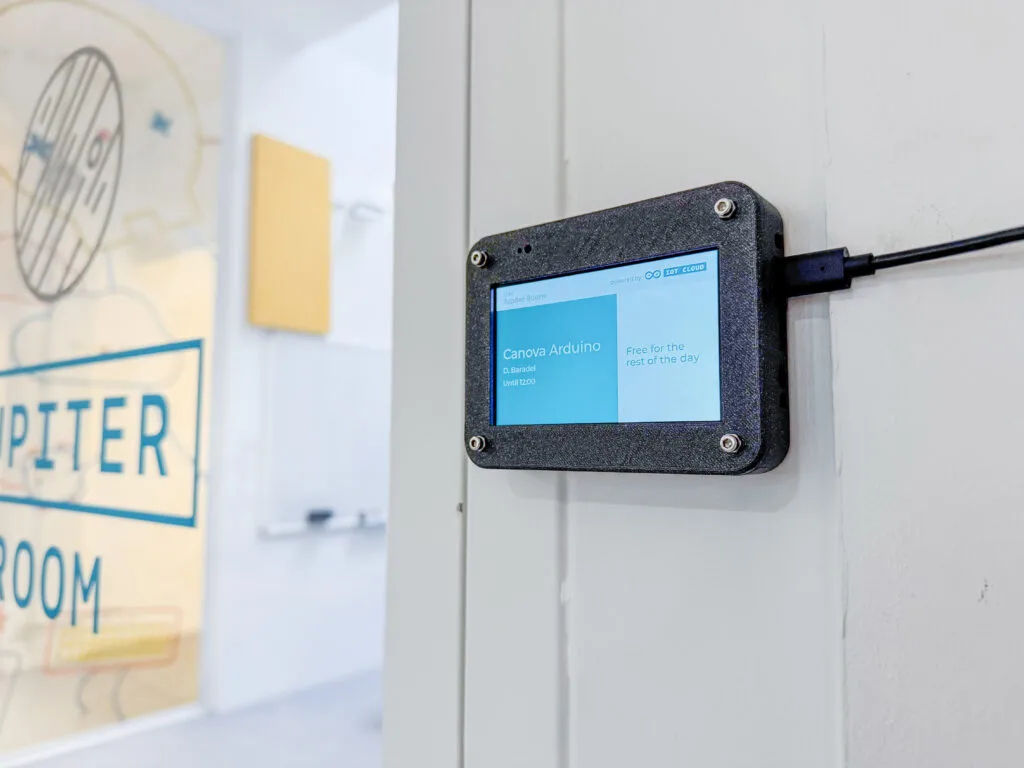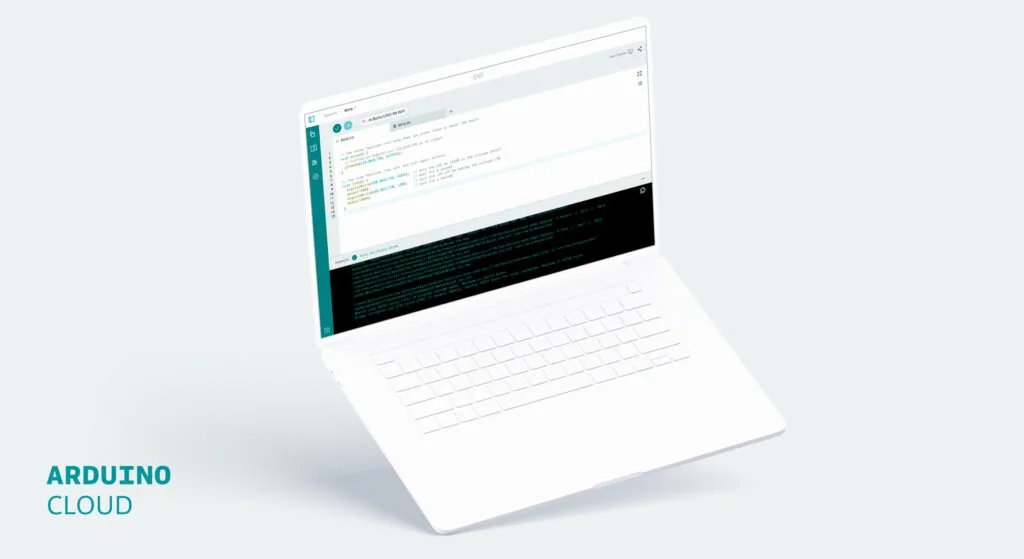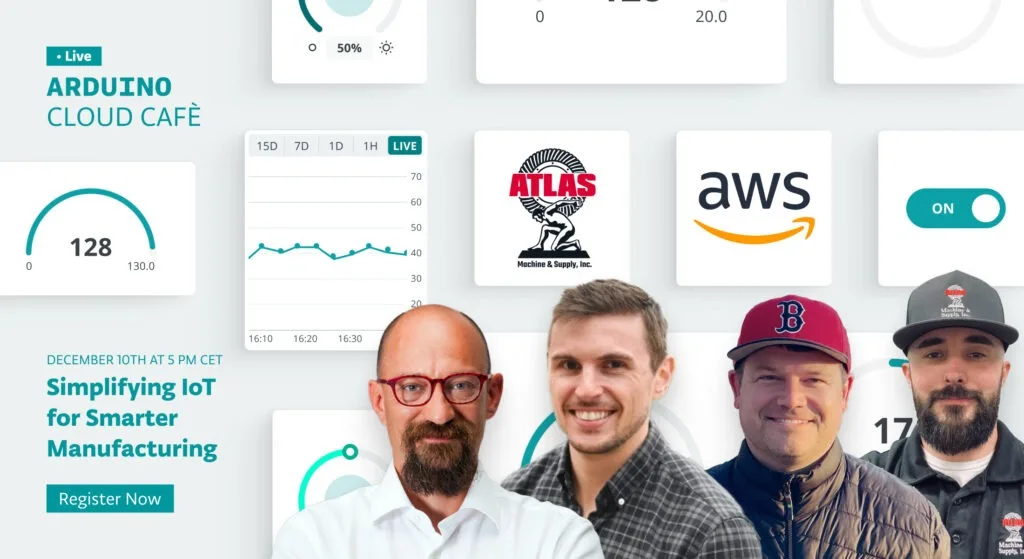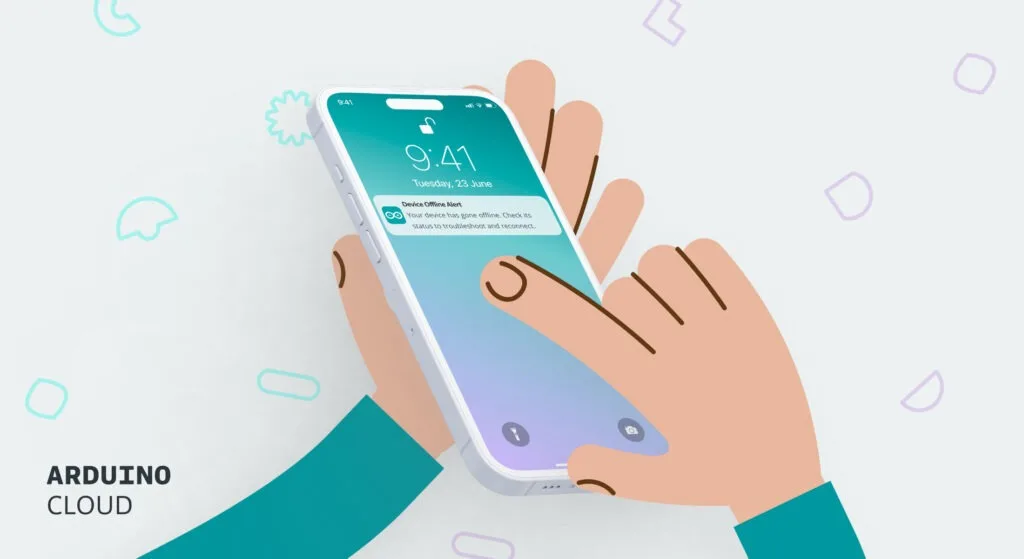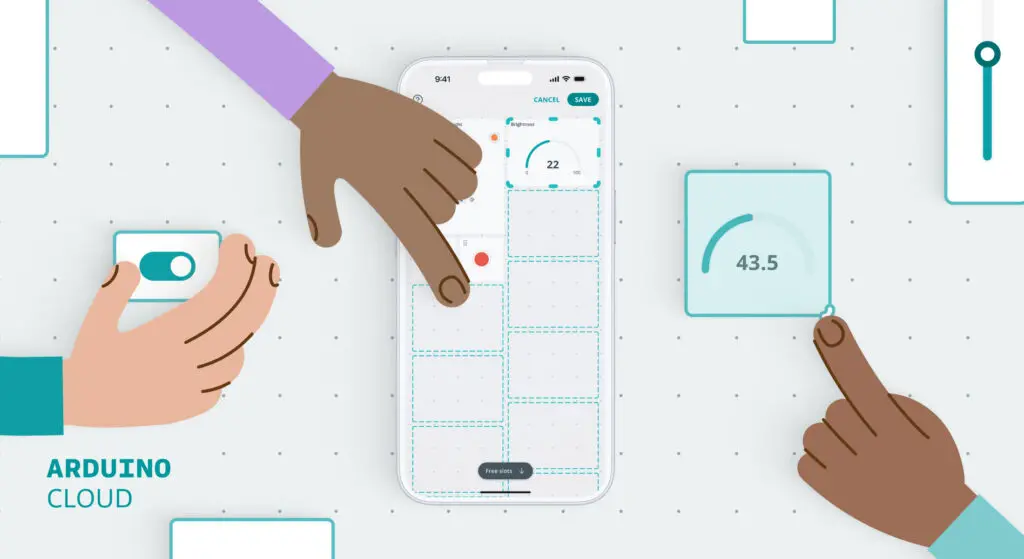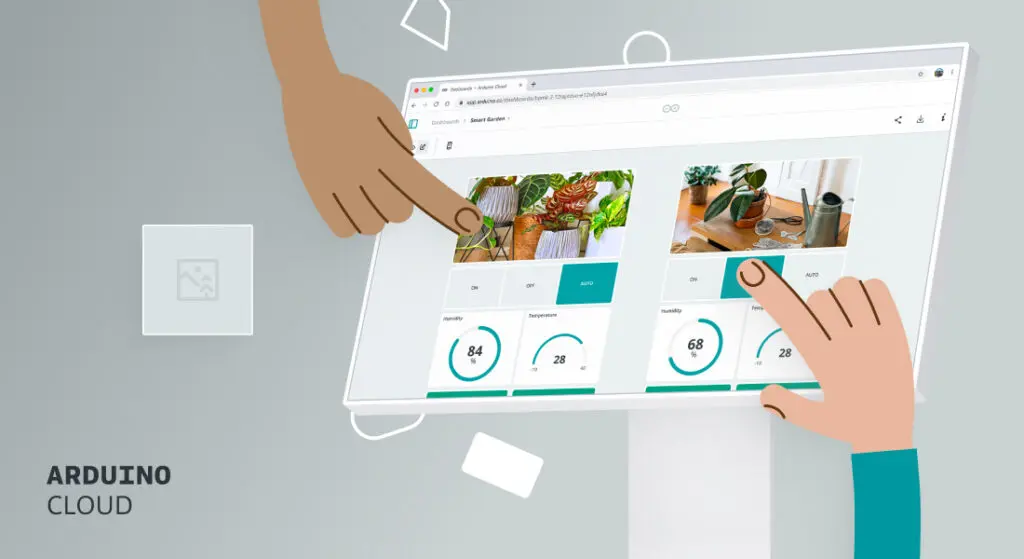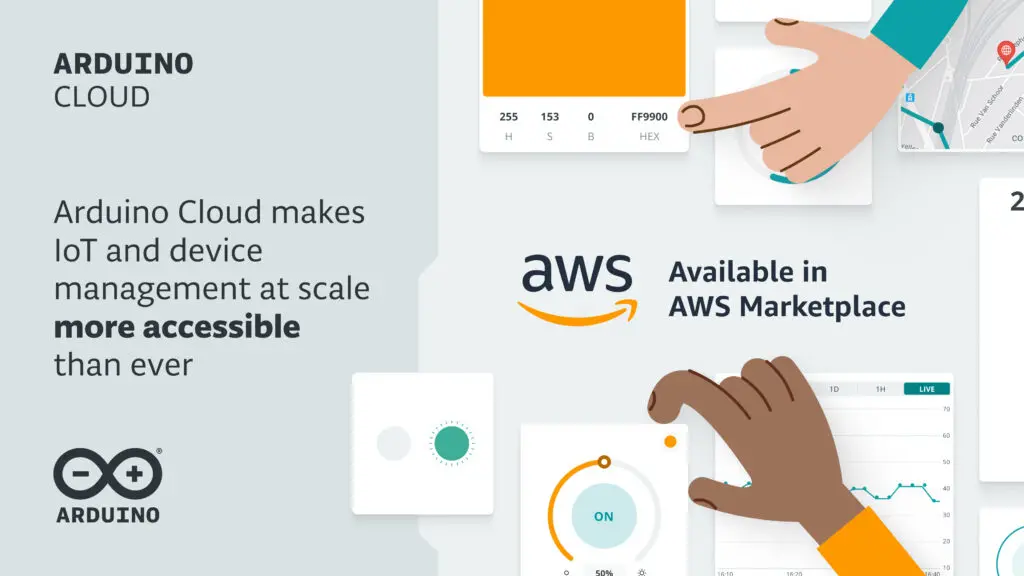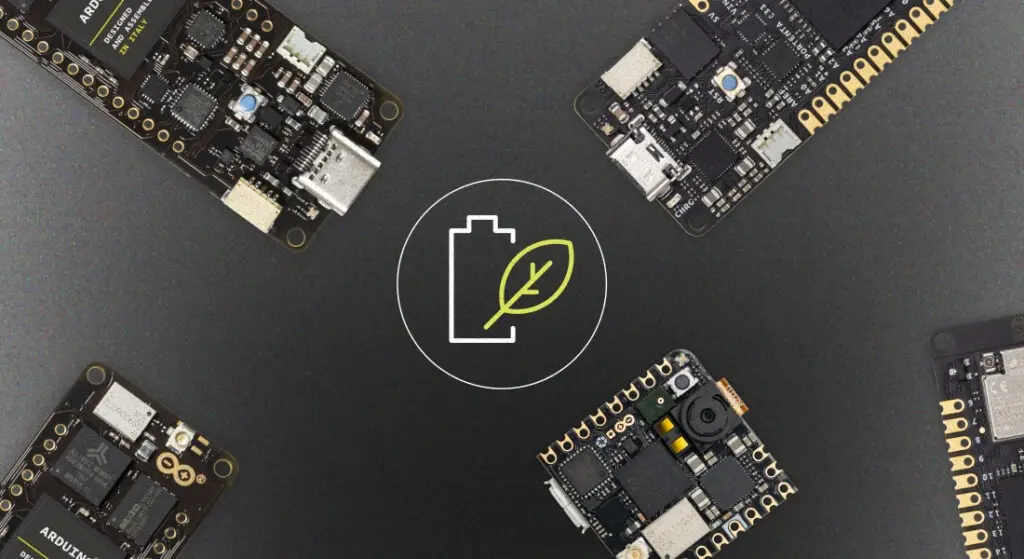Schlagwort: Arduino Cloud
-

Arduino AI Assistant vs. ChatGPT: Which one to use for your projects?
Reading Time: 4 minutesIf you’ve been turning to ChatGPT to write your Arduino code, you may actually be missing out on a tool designed just for you: the Arduino AI Assistant, built directly into Arduino Cloud. While general-purpose AIs like ChatGPT can generate code, they often miss critical details, such as using the wrong libraries…
-

Introducing a new Bluetooth provisioning flow — With the UNO R4 WiFi
Reading Time: 2 minutesWe’re excited to roll out a new Bluetooth provisioning flow on Arduino Cloud — and the UNO R4 WiFi is the first board to support it! Say goodbye to cables and complicated steps: setup is now faster and smoother. Wait, what is provisioning? Provisioning is the process of securely registering your Arduino…
-

Why we chose Claude for the Arduino Cloud AI Assistant
Reading Time: 4 minutesWe know that introducing AI into your coding environment comes with questions – about safety, accuracy, privacy, and trust. That’s why we want to be transparent about how we built the recently-announced Arduino AI Assistant in the Cloud IDE, and why we chose to power it with Claude by Anthropic, available via…
-

Arduino Cloud Café: Teach real coding concepts with Arduino AI Assistant
Reading Time: < 1 minuteAre you an educator looking to make coding easier and faster to teach? Join Andrea Richetta, Principal Product Evangelist at Arduino, and Roxana Escobedo, EDU Product Marketing Specialist, for a special Arduino Cloud Café live webinar on July 7th at 5PM CET. You will discover how the new AI Assistant in…
-

Code faster with the new Arduino AI Assistant
Reading Time: 4 minutesWe’re very excited to share that the Arduino AI Assistant is now available in the Arduino Cloud Editor! This expert coding companion truly understands your project and board, and can generate and fix your code in seconds. We know that many of you already use other AI tools to assist with coding,…
-

Find the right Arduino Cloud plan for you
Reading Time: 3 minutesArduino Cloud has grown tremendously over the past year, adding powerful features to make development smoother and IoT deployments more scalable. From real-time collaboration to interactive digital twins on a dashboard and AI-powered coding assistance, our platform has evolved to support everyone. Now, if you tuned in to Arduino Days 2025 (watch…
-

Tecnoseta revives the silk industry with open-source innovation
Reading Time: 3 minutesThe silk industry has a rich history in Italy, but modern challenges have brought this centuries-old tradition to the brink of decline. Once a cornerstone of the rural economy in Italy, with a strong presence in Zagarolo, Rome, silk production has dwindled in the country due to industrial developments, synthetic fibers’ growing…
-

Build an e-paper weather display and message board using Arduino Cloud
Reading Time: 2 minutesIf you haven’t yet experimented with the Arduino Cloud, then you may not be aware of how powerful it is for Internet of Things (IoT) applications. Using the service and its online tools, you can quickly build and deploy smart IoT devices — often with little or no custom code required. Rei…
-

Control your Raspberry PI GPIO with Arduino Cloud using Node.js | Part III
Reading Time: 6 minutesAs a Node.js developer, you’re probably eager to put your JavaScript skills to work beyond the browser or server, diving into the world of hardware control with Raspberry Pi GPIOs. If that’s the case, you’re in the right place! This article is the third part of our series, following A guide to…
-

Export data from Arduino Cloud to AWS S3
Reading Time: 3 minutesManaging your IoT data just got a whole lot easier — Arduino Cloud, now lets you send your time series data straight to AWS S3. With this seamless connection, organizing and analyzing your data is a breeze. In case you don’t know, Arduino Cloud is a robust, integrated platform that simplifies the…
-

Deploy your smart meeting room management system with Arduino GIGA
Reading Time: 3 minutesManaging shared spaces, especially meeting rooms, can be a headache in busy offices. At Arduino, we’ve experienced it firsthand in our flexible and dynamic offices around the world – where colleagues could often be seen wandering around with their laptops, trying to find a quiet place for videocalls or brainstorming sessions. We started…
-

Speed up your project’s compile time by up to 50% in Arduino Cloud!
Reading Time: 3 minutesAt Arduino, we know how precious your time is when you’re building your next big project or experimenting with new ideas. That’s why we’re thrilled to introduce a game-changing update to the Cloud Editor Builder — the engine behind compiling your sketches in Arduino Cloud. This update is all about you: making…
-

Simplifying IoT for smarter manufacturing: Join the chat with Arduino, AWS, and Atlas Machine
Reading Time: 2 minutesWe all know that the future of manufacturing lies in IoT — yet the path to adoption can sometimes feel daunting. But what if you could simplify the process and start seeing results quickly? That’s exactly what we’re going to explore in our upcoming Arduino Cloud Café webinar on December 10 at…
-

Receive an alert when your device goes offline in Arduino Cloud
Reading Time: 3 minutesYou’re managing a network of IoT sensors that monitor air quality across multiple locations. Suddenly, one of the sensors goes offline, but you don’t notice until hours later. The result? A gap in your data and a missed opportunity to take corrective action. This is a common challenge when working with IoT…
-

7 powerful ways to integrate Collaborative Coding into education with the Arduino Cloud
Reading Time: 4 minutesCollaborative coding in education can be a game-changer for students, providing them with real-world skills in communication, teamwork, and problem-solving. With the new collaborating coding feature of the Arduino Cloud, students can collaborate in real time on coding projects, making it easier to test, integrate, and refine their work in the classroom…
-

How to customize your Arduino Cloud IoT dashboards on the go
Reading Time: 3 minutesThe Arduino Cloud has long been a trusted platform for makers, engineers, and developers to manage their IoT projects with ease. From tracking sensor data to automating smart devices, the cloud enables seamless connectivity. Complementing this, the Arduino IoT Remote mobile app gives users the power to monitor and interact with their…
-

Arduino Cloud is now available in AWS Marketplace!
Reading Time: 2 minutesWe’re excited to announce that Arduino Cloud is now available in AWS Marketplace, making it easier than ever for developers and businesses worldwide to integrate our powerful IoT platform into their AWS infrastructure. This development is particularly relevant for those in industrial manufacturing, energy management, supply chain, and logistics sectors who are…
-

Reduce power consumption in IoT and wearable devices, with Arduino’s new power management library!
Reading Time: 7 minutesDeveloping energy-efficient IoT and wearable devices is complex and time-consuming, yet it is essential for creating high-quality products that stand out in today’s market. A key part in this process is optimizing power consumption without sacrificing performance or functionality. Fortunately, Arduino Pro modules help address this challenge by offering powerful chips and…
-

You can now work in collaboration in Arduino Cloud
Reading Time: 4 minutesIn today’s busy world, getting students or engineers to work together is key to tackling complex IoT projects. Traditional code sharing and editing methods, like using offline IDEs or swapping files manually, often slow down projects and lead to mistakes. This can be a hassle and take up a lot of time,…
-

Enhance your IoT dashboards with Arduino Cloud’s new Image widget
Reading Time: 4 minutesAt Arduino, we’re constantly working to improve your IoT management experience. Today, we’re excited to announce a new feature for Arduino Cloud that will allow you to enhance your IoT dashboards: the Image widget. The new Image widget The Image widget is a simple yet powerful addition to your Arduino Cloud toolkit. …
